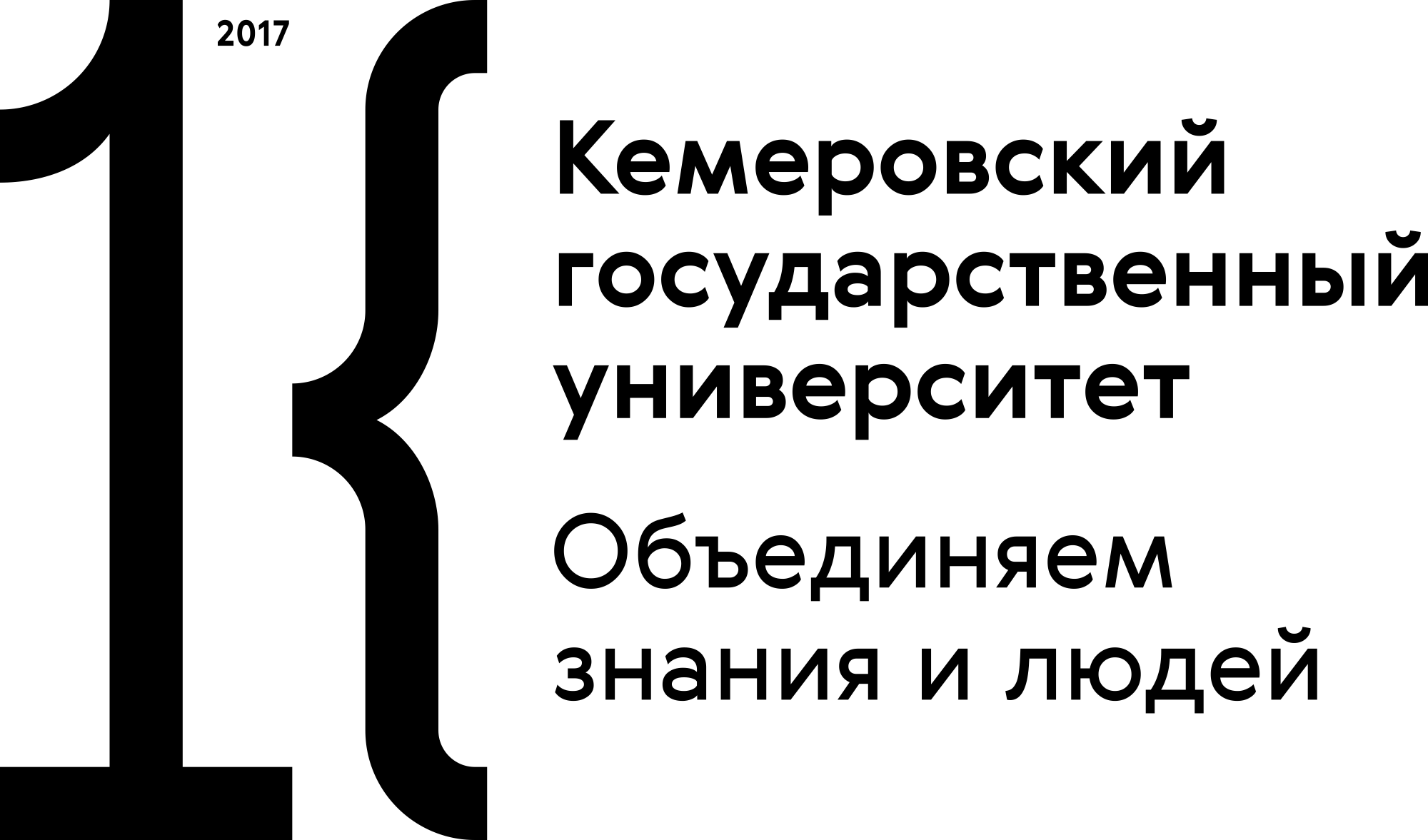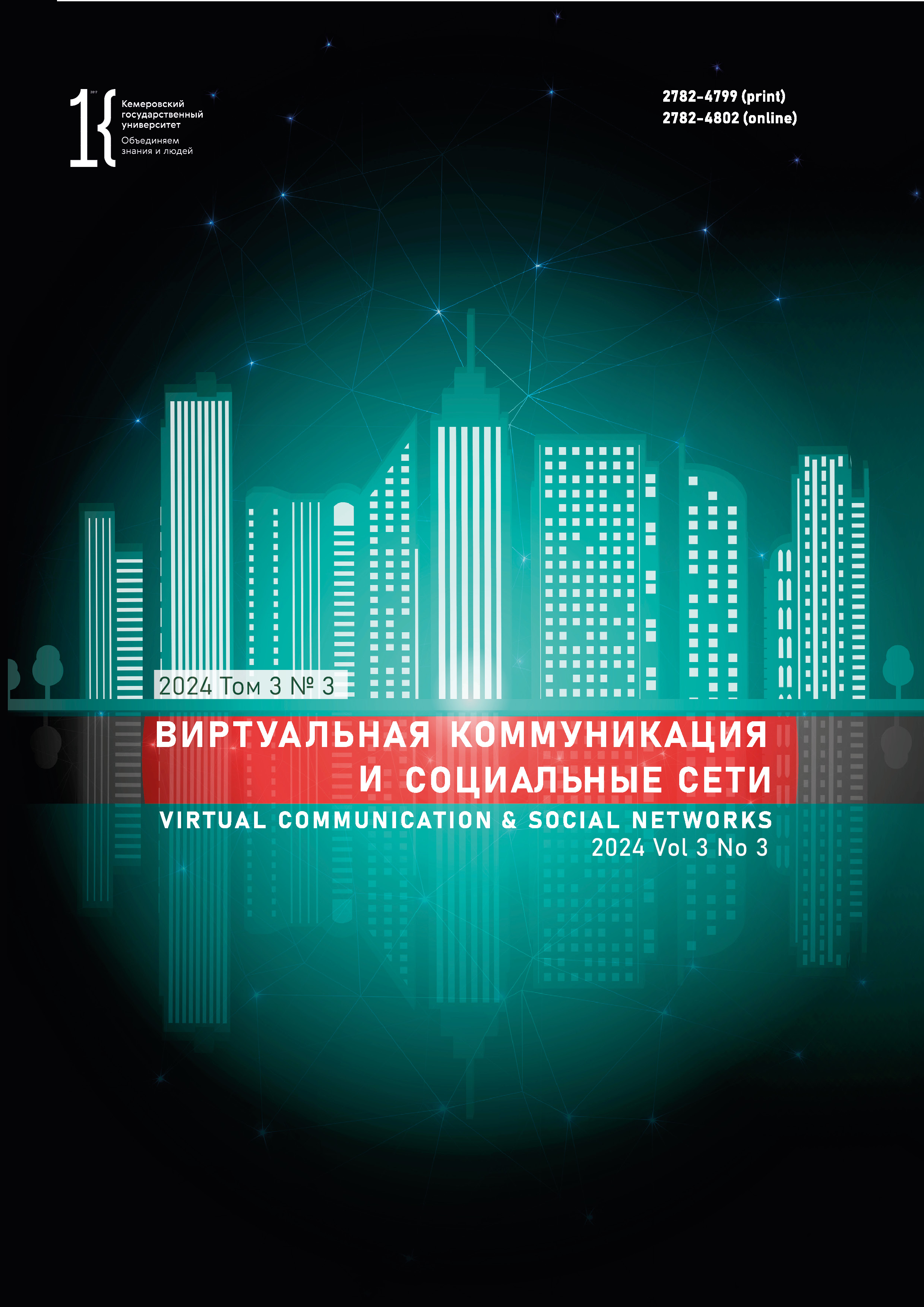Orekhovo-Zuyevo, Russian Federation
Peoples’ Friendship University of Russia named after Patrice Lumumba
Moscow, Russian Federation
Harbin, China
VAK Russia 5.12.3
Emoticons are a vivid example of graphic emotionology in virtual communication. The interdisciplinary character of this research made it possible to combine linguistics with exact and natural sciences, including the young science of emotional artificial intelligence. Transmitting psycho-emotional experiences is important for effective virtual communication. Emotional pictography provides a more accurate understanding of the emotive content in a message. It relies on associative links between the image of a specific psycho-emotional state and its perception by a carrier of a specific linguistic culture. Basic emoticons are of universal nature, and internet users with different cultural and linguistic backgrounds tend to interpret them similarly. However, members of different ethno-linguistic communities sometimes decode the same emotions differently, which may lead to misunderstanding, as well as to serve as a marker on the friend – foe axis. Emoticons represent a clearly verified range of emotive states, which can be appealed to in virtual communication. The authors developed a classification of emoticons and proposed graphic emotionology as a new branch of linguistic semiotics. The metaphorical nature of the emoticon as a coded emotion with additional evaluative shades is revealed as a certain unified image or a complex of signs due to the accepted emotive norms of speech behavior. In addition, emoticons provide efficient compression during virtual communication. Intercultural virtual communication enriches the range of emoticons both linguistically and culturally, thus developing graphic emotionology internationally. Emoticons provide insight into the development of graphic emotionology.
emotions, emoticon, graphic emotionology, virtual communication, graphic emotive metaphor
1. Amurskaya O. Y. Isomorphism and allomorphism of the verbal-semantic level of the linguistic personality of a Russian-speaking and German-speaking chat communicant: Based on the material of chats of general topics. Cand. Philol. Sci. Diss. Abstr. Kazan, 2008, 25. (In Russ.) https://elibrary.ru/zntqix
2. Anumyan K. S. Category of surprise as a marker of migrant’s linguistic and cultural shock (on the example of Russia and Armenia). Cand. Philol. Sci. Diss. Moscow, 2022, 286. (In Russ.) https://elibrary.ru/nsubdz
3. Anumyan K. S., Harutyunyan V. N. Armenian diaspora in Russia: Communicative and emotive picture of migrant’s world. Philological sciences. Scientific essays of higher education, 2022, (3): 66–71. (In Russ.) https://doi.org/10.20339/PhS.3-22.066
4. Anumyan K. S., Karabulatova I. S. Emoticeme "surprise" in the aspect of projectively and pragmatically constructed information. Vestnik of Russian new university. Series "Man in the modern world", 2022, (2): 85–91. (In Russ.) https://doi.org/10.18137/RNU.V925X.22.02.P.085
5. Apresyan Yu. D. Selected works. Lexical semantics. 2nd ed. Moscow: Vost. lit. RAN, 1995, vol. I, 472. (In Russ.)
6. Arsenyev A. S., Ilyenkov E. V., Davydov V. V. Machine and man, cybernetics and philosophy. Lenin's Theory of Reflection and Modern Science, ed. Konstantinov F. V. Moscow: Nauka, 1966, 263–284. (In Russ.)
7. Arutyunova N. D. Human language and world. 2nd ed. Moscow: IaRK, 1999, 896. (In Russ.) https://elibrary.ru/ylawar
8. Balashova V. V. Emotional intelligence as an integral part of personality intelligence. Social and Humanitarian Bulletin of the South of Russia, 2011, (9): 28–38. (In Russ.) https://elibrary.ru/xqjdtv
9. Benveniste E. General linguistics. Moscow: Librocom, 2010, 448. (In Russ.)
10. Beresnev N. P. "Emojis" – the hieroglyphs of the digital era. Student Forum, 2020, (18-1): 78–80. (In Russ.) https://elibrary.ru/tfranl
11. Butakova L. O., Vyazigina S. Yu. Emotive component of the impact in the internet blog text. Science journal of Volgograd State University. Linguistics, 2023, 22(1): 39–52. (In Russ.) https://doi.org/10.15688/jvolsu2.2023.1.4
12. Wittgenstein L. Blue and Brown books: Preliminary materials to "Philosophical research". Moscow: Kanon-Plius, 2022, 384. (In Russ.)
13. Gavrish A. D., Gulyaeva E. V., Kompaneeva L. G. Emotional cognitive units in modern mediaspace. Cognitive studies of language, 2024, (1-2): 267–270. (In Russ.) https://elibrary.ru/nsvgpy
14. Golev N. D. Cognitive and communicative axiology of modern virtual pedagogical communication: Notes for discussion. Virtual Communication and Social Networks, 2023, 2(4): 204–214. (In Russ.) https://doi.org/10.21603/2782-4799-2023-2-4-204-214
15. Goch O. V. Graphic and phonetic means of expressing emotions in the Russian Internet language. February readings: Proc. conf., Syktyvkar, 1–28 Feb 2015. Syktyvkar: SyktSU, 2015, 34–41. (In Russ.) https://elibrary.ru/zqajgn
16. Goots E. N. Associative potential of lexemes – designations of emotions. Science Journal of Volgograd State University. Linguistics, 2023, 22(1): 53–64. (In Russ.) https://doi.org/10.15688/jvolsu2.2023.1.5
17. Dvoynikova A. A., Karpov A. A. Analytical review of approaches to Russian text sentiment recognition. Information and control systems, 2020, (4): 20–30. (In Russ.) https://doi.org/10.31799/1684-8853-2020-4-20-30
18. Dudareva Ya. A., Shpilnaya N. N. Dialogue as text containing emoticons: Jurislinguistic approach. Legal Linguistics, 2023, (27): 99–105. (In Russ.) https://doi.org/10.14258/leglin(2023)2718
19. Kalashnikova A. A. Linguistic personality in computer-mediated communication: Issues of theory and pragmatics. Rostov-on-Don: DSTU, 2017, 119. (In Russ.) https://elibrary.ru/ypgllr
20. Karabulatov M. N. Homo Digitalis and the problem of art of the XXI century through the prism of E. V. Ilyenkov’s view. Vestnik of Russian New university. Series "Man in the modern world", 2023, (1): 15–22. (In Russ.) https://doi.org/10.18137/RNU.V925X.23.01.P.015
21. Karabulatova I. S., Ko Ch., Sun Q., Ivanova-Yakushko M. M. Metaphorical euphemization of neuropsychophysiological communication in the terminology of traditional Chinese medicine. Key Issues of Contemporary Linguistics, 2024, (1): 33–51. (In Russ.) https://doi.org/10.18384/2949-5075-2024-1-33-51
22. Karasik V. I. Linguistic plasticity of communication. Moscow: Gnosis, 2021, 536. (In Russ.) https://elibrary.ru/aiogmr
23. Karasik V. I. The linguistic spiral: Values, signs, and motives. Moscow: Gnosis, 2019, 422. (In Russ.) https://www.elibrary.ru/sbjjwj
24. Karasik V. I. Language circle: Personality, concepts, discourse. 2nd ed. Moscow: Gnosis, 2004, 390. (In Russ.) https://elibrary.ru/qqwtkl
25. Karaulov Yu. N. Russian language and linguistic personality. 8th ed. Moscow: URSS, 2014, 264. (In Russ.) https://elibrary.ru/sirwqn
26. Kormin N. A. I. Kant: How is aesthetic possible? Philosophy and Culture, 2022, (4): 60–112. (In Russ.) https://doi.org/10.7256/2454-0757.2022.4.37815
27. Korostova S. V. Emoticon of the language personality in the texts of modern mass media. Proceedings of Southern Federal University. Philology, 2015, (1): 77–87. (In Russ.) https://elibrary.ru/tmgrjl
28. Kohanovsky V. A., Sergeeva M. H. Organization and planning of the experiment. Rostov-on-Don: DSTU, 2003, 167. (In Russ.) https://elibrary.ru/qjmofd
29. Mamina R. I., Piraynen E. V. Emotional artificial intelligence as a tool for human-machine interaction. Discourse, 2023, 9(2): 35–51. (In Russ.) https://doi.org/10.32603/2412-8562-2023-9-2-35-51
30. Mishlanov V. A., Kadzhaya L. A., Kuznetsova Yu. M. Linguistic markers of emotional state of the speech subject (on the problem of automatic monitoring of network communication texts). Media linguistics, 2020, 7(4): 428–444. (In Russ.) https://doi.org/10.21638/spbu22.2020.405
31. Nedostup O. I. The emoticon sign in the semantic and pragmatic aspect. Space of science, Sociology, philology, cultural studies, 2020, 11(4). (In Russ.) https://doi.org/10.15862/47FLSK420
32. Orlova N. N. Rhetoric. Moscow: RSU, 2017, 249. (In Russ.) https://elibrary.ru/zprkvb
33. Petrenko V. F., Korotchenko E. A., Suprun A. P. Still life as a visual aphorism. Psychology. Journal of the Higher School of Economics, 2010, 7(2): 26–44. (In Russ.) https://elibrary.ru/qoymsz
34. Piotrovskaya L. A. Emotiogenicity of text: Psychological and linguistic aspects. Science Journal of Volgograd State University. Linguistics, 2023, 22(1): 28–38. (In Russ.) https://doi.org/10.15688/jvolsu2.2023.1.3
35. Pishchalnikova V. A. Principles of psycholinguistic text analysis and the theory of emotions. Science Journal of Volgograd State University. Linguistics, 2023, 22(1): 5–12. (In Russ.) https://doi.org/10.15688/jvolsu2.2023.1.1
36. Rashevskikh V. O., Lavrova A. G. Graphic emoji language as an element of discursive practices in Internet social networks. Political vector-L. Complex problem of a modern policy, 2016, (1-2): 163–170. (In Russ.) https://elibrary.ru/xhwdoz
37. Romanov A. A., Sorokin Yu. A. Verb- and psychosomatics: Two maps of human body. Moscow: IL RAS, 2008, 172. (In Russ.) https://elibrary.ru/tvcbxx
38. Ryabova M. Yu. Virtual communication etiquette and its features. Virtual Communication and Social Networks, 2023, 2(4): 239–245. (In Russ.) https://doi.org/10.21603/2782-4799-2023-2-4-239-245
39. Subbota N. S., Ilyicheva I. L., Strizhevich E. N. Word-formation potential of the internet discourse. Journal of Shadrinsy State Pedagogical University, 2019, (4): 324–332. (In Russ.) https://elibrary.ru/yrlshk
40. Shakhovsky V. I. Voice of emotions in the language circle of homo sentiens. Moscow: URSS; Librokom, 2012, 141. (In Russ.) https://elibrary.ru/qxfgsl
41. Shakhovsky V. I. Emotive futurology: Will robots be able to feel as humans do? Human being: Image and essence. Humanitarian aspects, 2021, (2): 91–111. (In Russ.) https://doi.org/10.31249/chel/2021.02.06
42. Bulegenova I. B., Karabulatova I. S., Kenzhetayeva G. K., Beysembaeva G. Z., Shakaman Y. B. Negativizing emotive coloronyms: A Kazakhstan-US Ethno-Psycholinguistic comparison. Amazonia Investiga, 2023, 12(67): 265–282. https://doi.org/10.34069/AI/2023.67.07.24
43. Dewaele J.-M., Wu A. Predicting the emotional labor strategies of Chinese English Foreign Language teachers. System, 2021, 103. https://doi.org/10.1016/j.system.2021.102660
44. Dürscheid C., Meletis D. Emojis: A grapholinguistic approach. Graphemics in the 21st Century: Proc. Grapholinguistics and its Applications, Brest, 13–15 Jun 2018. Brest: Fluxus Editions, 2019, 167–183. http://dx.doi.org/10.36824/2018-graf-duer
45. Joe B. Comparative review of using emoji in Russian and Chines new media. Foreign Languages in Uzbekistan, 2023, (3): 69–86. http://dx.doi.org/10.36078/1687760741
46. Karabulatova I. S., Aipova A. K., Butt S. M., Amiridou S. Linguocognitive conflict of digital and pre-digital thinking in online educational discourse during the pandemic: Social danger or a new challenge? Journal of Siberian Federal University. Humanities & Social Sciences, 2021, (14): 1517–1537. http://dx.doi.org/10.17516/1997-1370-0836
47. Karabulatova I. S., Anumyan K. S., Korovina S. G., Krivenko G. A. Emoticeme SURPRISE in the news discourse of Russia, Armenia, Kazakhstan and China. RUDN Journal of Language Studies, Semiotics and Semantics, 2023, 14(3): 818–840. https://doi.org/10.22363/2313-2299-2023-14-3-818-840
48. Konrad A., Herring S. C., Choi D. Sticker and emoji use in Facebook Messenger: Implications for graphicon change. Journal of Computer-Mediated Communication, 2020, 25(3): 217–235. https://doi.org/10.1093/jcmc/zmaa003
49. Miltner K. M. "One part politics, one part technology, one part history": Racial representation in the Unicode 7.0 emoji set. New Media & Society, 2020, 23(3): 515–534. https://doi.org/10.1177/1461444819899623
50. Nasukawa T., Yi J. Sentiment analysis: Capturing favorability using natural language processing. Proceedings of the 2nd international conference on Knowledge capture: Proc. Conf., Sanibel Island FL, 23–25 Oct 2003. NY: Association for Computing Machinery, 2003, 70–77. https://doi.org/10.1145/945645.945658
51. Qin M., Xiao D., Yuan L., Karabulatova I. Emotive tonality of the "Youth–Old Age" dichotomy in Russian and Chinese media discourses: The stage of psychosemantic expertise. Journal of Psycholinguistic Research, 2022, 52: 525–553. http://dx.doi.org/10.1007/s10936-022-09899-z
52. Seargeant P. The emoji revolution: How technology is shaping the future of communication. Cambridge: Cambridge University Press, 2019, 231. https://doi.org/10.1017/9781108677387
53. Thompson D., Filik R. Sarcasm in written communication: Emoticons are efficient markers of intention. Journal of Computer-Mediated Communication, 2016, 21(2): 105–120. https://doi.org/10.1111/jcc4.12156
54. Trushchelev P. N. Emotive pragmatics of popularisation discourse: The impact of contextualisation on reader's interest. Science Journal of Volgograd State University. Linguistics, 2023, 22(1): 173–185. https://doi.org/10.15688/jvolsu2.2023.1.14

















